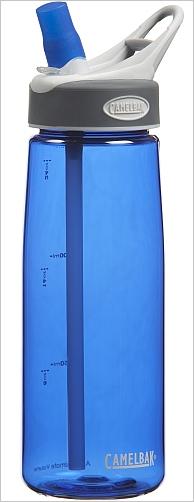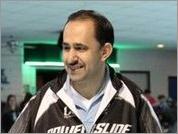This week's tip:
Don't Get Low On Salt
How to prevent hyponatremia with training or racing
[Editor’s note: Most of us know that we need to replace the water we lose through sweat when we workout. But many of us don’t realize that it’s just as important to replace the minerals and salts. In fact, being too low on salt — a condition called “hyponatremia” — can be just as dangerous as dehydration. Joe Hanna, founder of the International Speed Coaches Association, explains hyponatremia in this week’s tip.]
By Joe Hanna

Don't forget your electrolytes.
What is hyponatremia?
Hyponatremia is an electrolyte imbalance in which the amount of sodium (salt) in the body is too low. There are two basic ways to get it: one, by failing to replace the salt you lose through perspiration; two, by drinking too much water.
At the onset of hyponatremia, your muscles start locking up, your legs feel like lead, and you start to cramp up.
Untreated, the symptoms become increasingly severe: gastrointestinal discomfort, nausea, vomiting, headaches, confusion, difficulty breathing, seizures, brain stem herniation, and even death.
In short, hyponatremia is something you want to avoid.
Fortunately, it’s easy to prevent. Just be sure to replace the salt you lose during training and avoid over hydration.
How do you know if you are at risk for hyponatremia?
Some people are more prone to hyponatremia than others. If you sweat profusely, and if your sweat tends to be salty, you are naturally predisposed to hyponatremia, especially during long training sessions in hot or humid weather.
You can determine your “sweat rate” by using one of the “sweat rate calculators” online. But these calculators can only tell you so much. So use common sense.
In general, a person needs to drink three to eight ounces of an electrolyte-rich sports drink (e.g., Cytomax or Gatorade) every 15 to 20 minutes while training or racing.
Notice I said "sports drink,” not "water." Drinking water staves off dehydration — another potentially serious medical condition — but it also dilutes your body fluids.
On the other hand, sports drinks that contain electrolytes, such as chloride, calcium, magnesium, sodium and potassium, replenish your salts.
Three things to look out for:
Over-hydration
Try to stick to a predetermined fluid and sodium intake plan. Don’t drink more water than you need to replace what you’ve lost. Gaining weight during exercise is a sure sign of excessive fluid consumption.
Pre-hydrating with plain water
Drinking lots of water before you train or race can lower your blood sodium level, putting you in a deficit from the start. Instead, have a sports drink or some salty foods along with a glass of water.
Too much water after training or competition
Don't drown yourself after a workout or race. Remember, you only need to drink enough water to replace what you lost.
Get into the habit of weighing yourself before and after you exercise. You should weigh the same before as after. Aim to drink 24 ounces of sodium rich fluid or foods high in sodium, along with water, for every pound lost during exertion.
How to treat hyponatremia
At the first sign of symptoms, drink a electrolyte-rich sport drink or eat some salty food. If your symptoms persist or are severe, seek immediate medical attention.
Remember, hyponatremia can be dangerous.
...
 Joe Hanna is a veteran coach and the interim director of the International Speed Coaches Association (ISCA). He has worked under the direction of coaching greats Virgil Dooley and Skip Peterson and has trained numerous national and world champions. He gives clinics in the United States and South American. For more information about the ISCA, click the link below.
Joe Hanna is a veteran coach and the interim director of the International Speed Coaches Association (ISCA). He has worked under the direction of coaching greats Virgil Dooley and Skip Peterson and has trained numerous national and world champions. He gives clinics in the United States and South American. For more information about the ISCA, click the link below.